Maybe you’ve been neglecting your lawn, such as by not watering or weeding it enough, and it’s so unsightly you want to do something about it.
Now’s the time!
Can you revive dead grass?
Although you might think that once the grass has died you should give up on it, often the opposite is true. There are some effective ways in which you can breathe new life into dead, brown or yellow grass.
With that in mind, let’s explore what dead grass actually is and what it needs to come back to life.
A greener lawn awaits you.
Table of Contents
So, Is Your Lawn Really Dead?
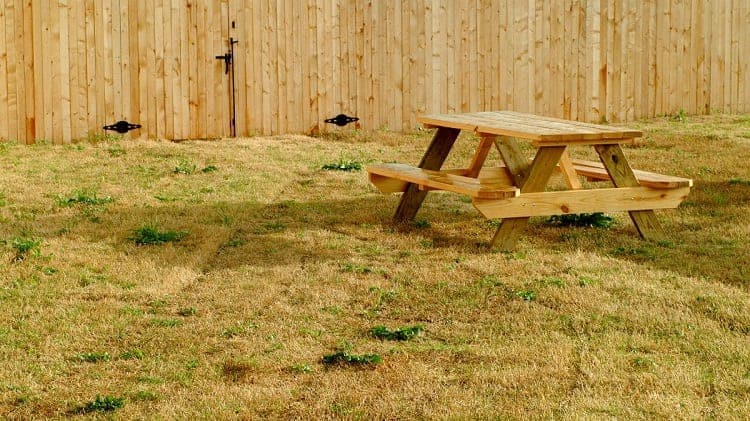
Although you might think that your brown grass is done for, this might not actually be the case.
In case you didn’t know, just because your grass is brown, it doesn’t mean that it’s dead.
There are some turf grasses that actually become dormant during very dry conditions.
To test if that’s what’s been happening to your lawn, you want to ensure that the grass’s root structure is still intact and healthy.
Basically, if it is, then the grass will become green again after watering and some rain showers.
Wait for the next few spots of rain or water your lawn a few times to see what you’re dealing with.
You should also inspect your grass closely.
Do you see any green shoots in the grass when you look at it?
However minimal, these all point to new grass growth and show that your lawn can still be rescued.
Six Common Causes Of Dead Grass
There are many things that can cause your grass to go brown.
Here’s an outline of the most common ones and how to deal with them.
Drought Conditions
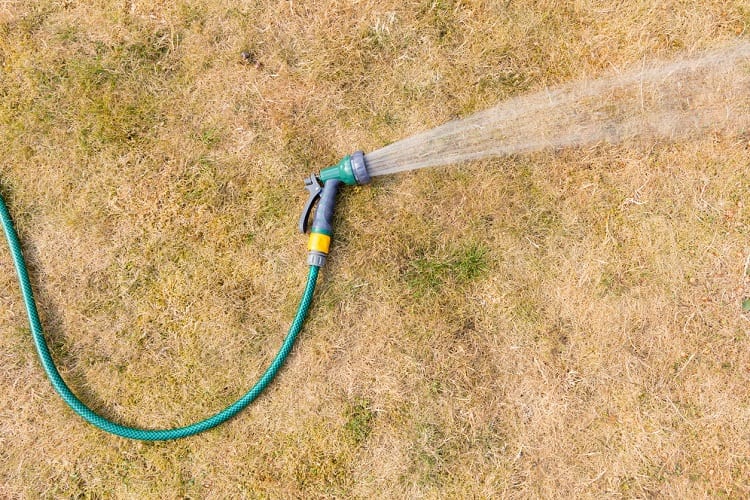
This is one of the most common reasons why grass turns born and dies, and it happens quicker than you might think.
After about three weeks of no water, grass goes into a dormant stage.
Make sure you stick to regularly watering your garden – aim for once a week for about half an hour – to prevent this from happening.
Thatch
This is another factor to consider if your lawn is filled with brown spots.
Thatch is basically a layer of plant matter that’s decomposed.
If you suspect that there’s too much thatch in your soil, then test it to be sure.
Dig a chunk of grass that’s about two inches thick.
Look at it.
If it’s in a healthy condition, then about three-quarters of an inch of it will have brown thatch in it, found between the green grass and soil surface.
If that layer of thatch is too thick, it’s problematic because it means that it’s blocking nutrients, oxygen, and water from reaching the grass.
This could be what’s causing the grass to turn brown.
To eliminate thick thatch, you’ll need what’s known as a dethatching rake.
It has very sharp tines to cut out the thatch from the soil.
Remember to rake afterward and apply nitrogen fertilizer to the lawn about a week after dethatching it so that you give your soil the nutrients it needs to grow again and in a healthier way.
Mowing Mistakes
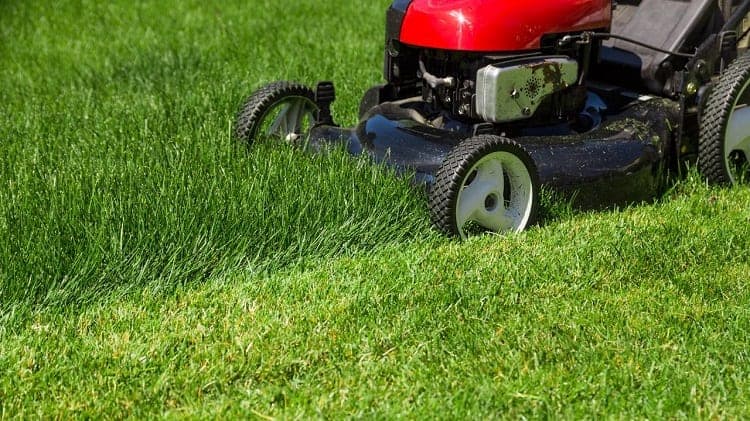
There are some common mowing mistakes that can cause the grass to die.
If you cut the grass too short, this puts a strain on it so it will become brown in response to that stress.
You should only cut one-third of the grass height.
And, when it’s really hot during the summer, you can leave about three inches of grass length to protect it against the elements.
Not Watering Enough
You might think a light watering session is enough to keep your grass healthy, but it needs the water to soak deep into its soil.
So, as mentioned earlier, water your garden once a week or whenever the grass looks like it’s limp.
Insects Are Attacking The Grass
You can find out if there are any bugs and pests attacking your lawn and causing it to turn brown by doing this quick test: cut a small area of grass out of the lawn.
If it comes out too easily, then pests could be damaging the roots and making them loose.
It’s worth remembering that pests will attack lawns that are watered too much or have too much fertilizer, which brings us to our next point.
Fertilizer Mistakes
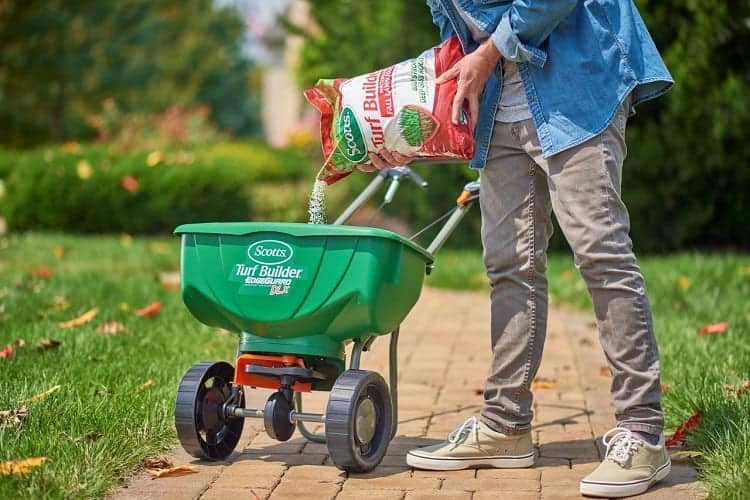
One of the worst things you can do is apply too much fertilizer to your grass.
Even if your grass needs it, you don’t want to drown it in too many nutrients as it won’t be able to absorb them.
They will also have adverse effects on the grass.
For example, too much fertilizer will make the soil end up with too much salt and nitrogen, which will damage the grass.
This is actually known as fertilizer burn because it burns the grass and it shows up as brown or yellow patches on your lawn.
When applying fertilizer, you should only apply what your lawn actually needs.
A good average amount of fertilizer is two or three pounds per 100 square feet of garden.
Don’t apply fertilizer to your lawn when the weather is too hot as this will put too much strain on your grass.
Make sure you wait until the temperature cools down a bit.
How To Revive Dead Grass: The Most Effective Strategies
Now that you know what’s causing your grass to die, there are many effective ways to bring life back into your lawn.
Here are some of the best ones.
Water Your Grass Wisely
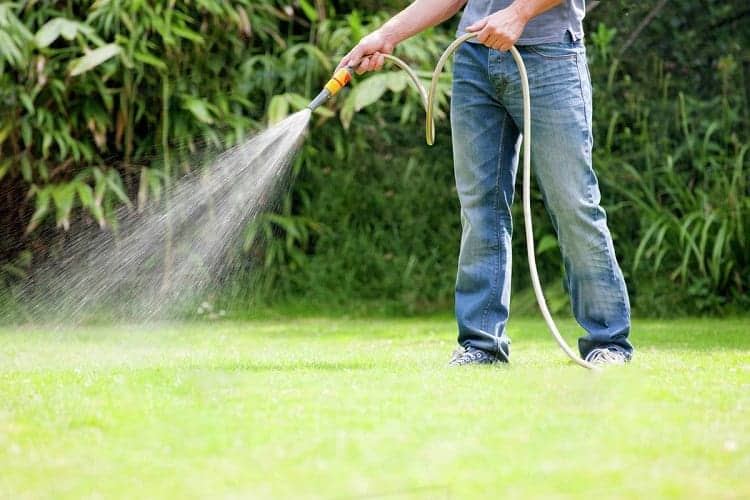
If you want to breathe new life into your grass, you might think you have to quickly water it and water it a lot.
But this can drown it.
Overwatering makes the grass much more vulnerable to disease and fungus.
The important thing is to give it enough water so that it can start to grow again.
You should aim for watering your lawn once a week for about 30 minutes.
This will give is a deep watering session from which it will benefit.
You should also make sure you water your garden before the summer season begins as this will help plants to develop deeper roots in the soil.
This makes them able to draw more moisture and nutrients from it.
Mow The Lawn
This might seem like strange advice, but mowing your lawn is an effective way to encourage it to grow again.
The important tip is to leave the grass clippings behind instead of throwing them into the compost heap.
Grass has a lot of nitrogen and it helps it to grow in a healthy way, so when you leave nitrogen-rich clippings on the lawn, they will be absorbed by the soil and this will give it a growth spurt, as Essential Home and Garden explains.
If you don’t want to leave grass clippings on your lawn because you’re worried about causing thatch problems, bear in mind that grass clippings don’t become thatch so they can be left on your lawn safely.
Don’t Forget To Give It Other Nutrients
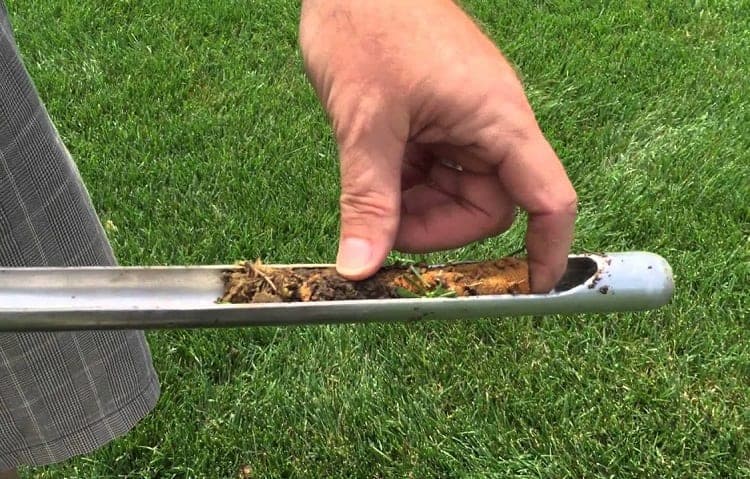
Test your soil – we outline how to properly test the pH of your soil in this article, “How To Use A Lawn Spreader Correctly” – so that you can tell if your soil is too acidic or alkaline, and so that you can correct it.
For example, if your soil is too acidic, applying lime to it will help to correct it.
You should also give your lawn a healthy dose of fertilizer.
Natural fertilizer, such as those grass clippings we mentioned earlier, can help, but you might need something a bit stronger.
Chemical fertilizers will have the right amount of nutrients, such as phosphorous, that grass needs to grow.
Purchase a lawn spreader to evenly distribute fertilizer in your garden so that you won’t have patches of lawn that receive more than others, causing bald, burned patches of grass.
After you have applied fertilizer to your lawn, always make sure that you water your garden so that the fertilizer will get absorbed by the soil and won’t get blown away by a strong wind.
Aerate The Soil
Aeration is removing soil plugs from the soil. It helps to ensure that your grass is getting enough of the nutrients, oxygen, and water it needs to survive.
By removing those soil plugs, you create pockets to encourage the plants to reach what it needs.
Here’s how you can aerate your soil:
- Dig a section of grass that’s about six inches deep. If you can see that the roots of the grass don’t travel more than two inches into the soil, your soil can benefit from being aerated.
- Water your soil well about a day or two before aerating it as this will help to soften those soil plugs that you want to remove.
- To aerate your soil, you’ll need a mechanical core aerator as it has tines that are hollow so they can swiftly pull up soil plugs. Luckily, you don’t have to purchase your own – you can rent one from a garden center, although it will set you back by about $50, as DIY Network reports. It is heavy to transport, so you might want to ask some friends to help you.
- You can aerate your soil without the use of a machine. You’ll need a spading fork. You should push it into your soil about four inches below the surface and push it forward and backward, then remove it from the soil. This will also have to be done every six inches across your lawn, as SF Gate reports. This is a time-consuming task, especially if you have a large lawn. However, if you have a small lawn, it is a cheaper and more practical option to aerate your lawn than using machinery.
Kill the Weeds
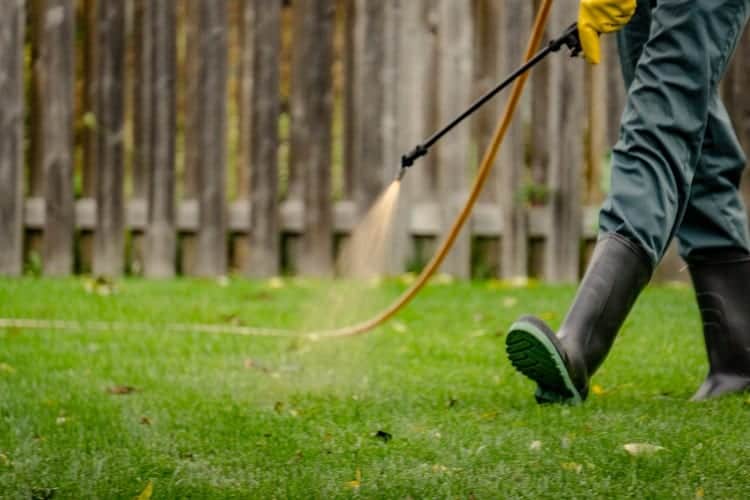
When your grass starts to grow, so do the weeds and they can be invasive.
You have to deal with them as soon as you see them, such as by pulling them out by hand but making sure to remove their roots at the same time.
Preventing weeds is much easier to do than eliminating them so that you don’t end up with what feels like a plague on your hands.
Putting mulch can help to prevent weeds from emerging.
You can also find other tips on how to prevent and tackle weeds by reading “How to Kill Weeds Without Damaging The Garden?”
Bear in mind that weeds don’t strike grass unless the grass is unhealthy, so if you keep your lawn healthy and give it the care it requires on a regular basis, then you will naturally keep weeds at bay.
Seeding Dead Grass
If you have grass seeds you might wonder if you can simply apply them to your dead grass. This is indeed possible.
Here’s a step-by-step guide to getting it done correctly.
Step One: Prepare Your Lawn
- Prepare your lawn, such as be dethatching it so that the seeds will be able to get the nutrients they need to grow.
- Make sure you mow your lawn so that it has a length of about an inch, which encourages it to draw more sunshine and water.
- You should aerate your soil as a way of preparing it for new seeds.
- Once you’ve done those steps, you can move on to how to seed your dead grass.
Step Two: Use A Seed Spreader
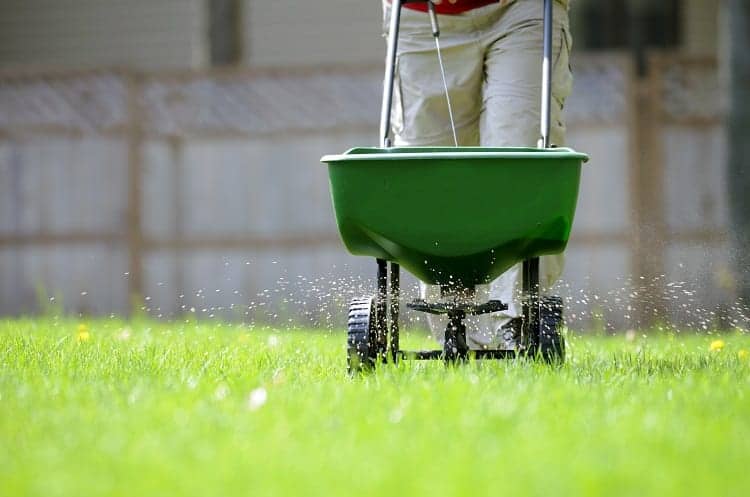
With the use of a seed spreader, you can apply grass seeds to your lawn.
A seed spreader helps to distribute the seeds more evenly all over the lawn than if you do it by hand.
You can also use a hand-held spreader that is budget-friendly and easy to use.
- You should apply double the amount of seed that you would if you were creating a lawn from scratch, as SF Gate reports. Once you’ve seeded the entire garden, making sure to use the same amount of seeds everywhere by walking at the same pace as you use the spreader, you can add fertilizer to the lawn.
- Make sure you water the lawn regularly so that the soil stays moist. This allows the seeds to grow deeper into the soil.
- After seeding, be careful about when next you mow the lawn. As SF Gate reports, you should wait until the new grass that grows is three-quarters of an inch taller than the usual height at which you mow your lawn. Once you mow the lawn for the first time, then you can go back to your regular mowing schedule.
- About a month or so after your seeds have germinated, your lawn can benefit from being fertilized with a good-quality fertilizer product that contains a high amount of nitrogen. At this stage in its growth, nitrogen is the most essential nutrient that grass needs in order to grow in a healthy way, as Greenview Fertilizer reports.
- Bear in mind that seeding is not something you can go ahead and do without considering your lawn. If there are other problems that your lawn is experiencing, such as if there are pests attacking it, these need to be properly eliminated before you go ahead and seed your lawn.
Related Questions
How long does dormant grass take to come back?
With all your efforts, you should see new grass growth after about three or four weeks. If no new growth begins and you’ve been diligent about treating your grass, then it’s probably time to accept that it’s dead, not dormant.
What causes patches of yellow grass on the lawn?
There are several possible causes. It could be that your sprinkler isn’t reaching certain spots. It could be that there’s a pest that’s infecting your lawn. Or, you could be putting too much fertilizer in certain places and not others. In that case, a lawn spreader can help.
Conclusion
Having a beautiful, lush lawn is something every homeowner wants.
If your grass is looking dead, it likely needs to be revived.
Luckily, you can do this in many ways, such as those that are outlined in this article.
Although you have to be a bit patient to see results, a bit of nurturing and time spent caring for your garden will go a long way to making it look beautiful again.
Last Updated on August 20, 2022 by Gustaf Johansson




